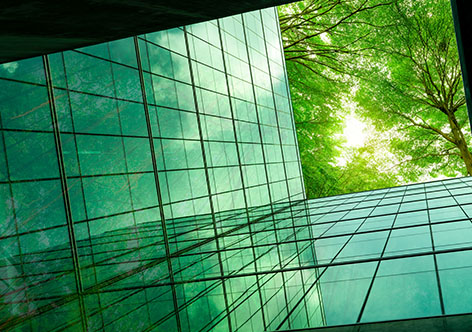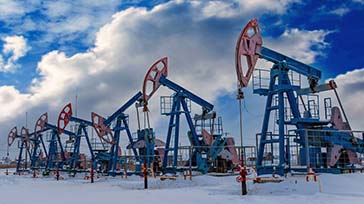Greater consumer demand is pushing Asian developers to increase the “greenness” of their property portfolios. What are the investment opportunities?
“Existential crisis”
Climate change is no longer a fringe issue but one that is having a profound impact on millions of people globally. Many have already been forced to rebuild their lives following the ever-increasing occurrence of weather catastrophes.
According to the world’s largest reinsurance provider, Swiss Re, global annual insured losses due to weather-related events reached US$105 billion in 2021. This includes deep winter freezes, floods, severe thunderstorms, heatwaves and major hurricanes. The losses are the third highest since 1970, surpassed only in 2005 (Hurricane Katrina) and 2017 (Hurricanes Harvey, Irma, Maria).
Over in Asia, cities like Singapore, Jakarta, Hong Kong, Tokyo and Mumbai are being increasingly exposed to extreme effects of climate change, including rising sea-levels, typhoons, floods and heatwaves. April’s temperatures in parts of India and across Pakistan were at their highest since records began 122 years ago. With food crops already severely affected, Pakistan’s minister for climate, Sherry Rehman, commented recently that the country was facing an “existential crisis”.
Buildings add to the problem
As a result of these major disasters, governments and private sector companies are now taking more urgent action to implement climate policies and meet existing commitments. One of the economic sectors that the United Nations Environment Programme believes more can and should be done is real estate.
The UN notes that the buildings sector contributes to 37 percent of annual greenhouse gas emissions and consumes around 36 per cent of the world’s energy. With global buildings’ floor area expected to double by 2060, there is a high chance that, unless the situation changes, this sector could become an even bigger contributor to the climate crisis.
This has increased the pressure on real estate companies in Asia to move faster to reduce their carbon emissions. There is a growing realisation among these companies that making buildings greener not only contributes significantly to the fight against global warming and helps meet country net-zero targets, but also appeals to tenants, consumers and investors.
Green building sector takes shape
The International Finance Corporation (IFC), a member of the World Bank Group, estimates that by 2030, the green buildings sector within emerging markets will see US$24.7 trillion in business investment opportunities. This is driven by the expansion of building construction and the need to reduce emissions. Over 70 percent of this opportunity lies in Asia and primarily in green homes. This is because over the next decade, more than half of the world’s urban population will be living in Asia, with a substantial portion enjoying higher levels of affluence.
The IFC report highlights the potential for green buildings to make good business sense. It expects a green building to be 12 percent more expensive to build, but subsequent operational costs would decrease by 37 percent, sales premiums would increase by up to 31 percent, occupancy rates would rise by 23 percent and rental income would be 8 percent higher.
Green construction is not new to Asia, and in 2020, the Asia Pacific region already accounted for the highest revenue share of the green building materials market, according to a report by Allied Market Research. The report notes that the region’s construction industry is set to increase its new-builds, but also its repair and maintenance activities, it appears that Asian Governments are using various regulatory carrots and sticks to drive green building initiatives, thereby ramping up demand for green building materials by 9.1 percent pa over the next few years.
Green buildings have knock-on effects
Aside from its climate impact, green buildings bring a range of economy-wide benefits to a country. The Singapore Green Plan for instance puts a huge emphasis on sustainable infrastructure and buildings. This is not only because of real estate’s ability to help the country meet its climate goals, but also the social and environmental benefits that it brings.
The country’s aspirations to create a “City in Nature” is backed not only by green construction materials and methods, but also the adoption of green design and technologies. Singapore’s Green Mark certification scheme offers a framework for assessing the overall environmental performance of a building, including its indoor environmental quality such as access to good ventilation and natural light. Many research studies suggest that these factors enable people living and working in green buildings to be healthier, sleep better and be less stressed.
REITs are turning green
There are today over 860 real estate investment trusts (REITs) listed globally with a market capitalization of about US$2.5 trillion. REITs are typically companies that own, run or finance a portfolio of income-producing real estate projects. By investing in a REIT, individuals can benefit from dividend payments as well as capital gains if and when the REIT price rises. Because REITs are neither stocks nor bonds, they offer diversification value and historically have performed well in rising interest rate environments, in contrast to stock and bond markets.
Given the revolution in green buildings, it is not surprising that some REITs have evolved into Green REITs. This is when a company’s portfolio of projects are wholly or substantially “green”, based on a local building certification or some other verifiable credential. A study published in the Journal of Sustainable Real Estate in 2019 noted that 34 percent of Singapore REITs (SREITs) was Green Mark-certified.
The study found that there was a good relationship between the “greenness” of a REIT portfolio and its operating performance. The means that the more sustainable a REIT is, the better it can better manage it overall energy usage and greenhouse gas emissions, while simultaneously enjoying better tenant retention and higher occupancy rates. This in turn translates to greater cost savings, higher revenues and higher profitability.
How green is a green REIT?
However, Singapore’s Green Mark aside, one of the biggest challenges for green real estate investors is verifying the greenness of a building. The LEED green building rating system, developed by the US Green Building Council, is one commonly-used global standard. China, India, and Korea have some of the most LEED-certified projects outside the US.
Similarly, a large number of property companies, REITs, funds and developers use GRESB, an independent data and benchmark provider, to undertake green real estate assessments. In 2021, GRESB assessed 1,520 real estate entities, of which 238 were Asia-based. This compares to 187 Asia-based entities in 2020.
The growth of green real estate assessments and credentials point to the increasing recognition among Asian industry players that greenness really does matter.
This publication shall not be copied or disseminated, or relied upon by any person for whatever purpose. The information herein is given on a general basis without obligation and is strictly for information only. This publication is not an offer, solicitation, recommendation or advice to buy or sell any investment product, including any collective investment schemes or shares of companies mentioned within. Although every reasonable care has been taken to ensure the accuracy and objectivity of the information contained in this publication, UOB Asset Management Ltd ("UOBAM") and its employees shall not be held liable for any error, inaccuracy and/or omission, howsoever caused, or for any decision or action taken based on views expressed or information in this publication. The information contained in this publication, including any data, projections and underlying assumptions are based upon certain assumptions, management forecasts and analysis of information available and reflects prevailing conditions and our views as of the date of this publication, all of which are subject to change at any time without notice. Please note that the graphs, charts, formulae or other devices set out or referred to in this document cannot, in and of itself, be used to determine and will not assist any person in deciding which investment product to buy or sell, or when to buy or sell an investment product. UOBAM does not warrant the accuracy, adequacy, timeliness or completeness of the information herein for any particular purpose, and expressly disclaims liability for any error, inaccuracy or omission. Any opinion, projection and other forward-looking statement regarding future events or performance of, including but not limited to, countries, markets or companies is not necessarily indicative of, and may differ from actual events or results. Nothing in this publication constitutes accounting, legal, regulatory, tax or other advice. The information herein has no regard to the specific objectives, financial situation and particular needs of any specific person. You may wish to seek advice from a professional or an independent financial adviser about the issues discussed herein or before investing in any investment or insurance product. Should you choose not to seek such advice, you should consider carefully whether the investment or insurance product in question is suitable for you.





